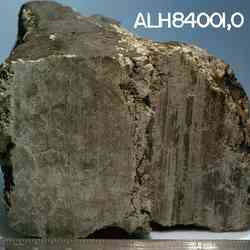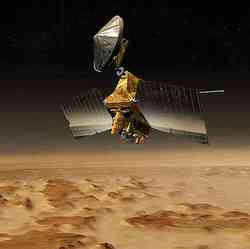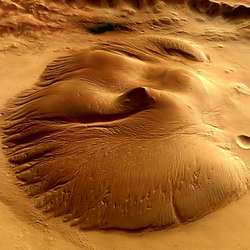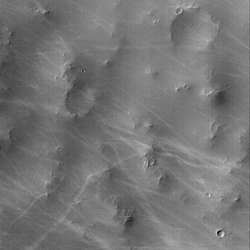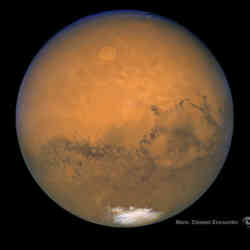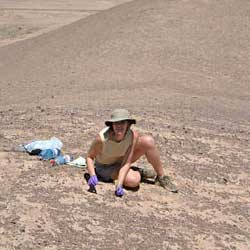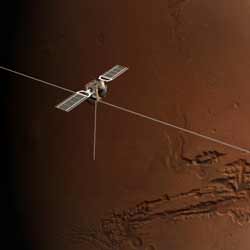
Crater Holden and Uzboi Vallis. Image credit: ESA/DLR/FU Berlin. Click to enlarge
Over the coming decade, NASA should develop and implement new methods and requirements to detect and eliminate microorganisms on robotic spacecraft sent to Mars to prevent possible contamination of the planet, says a new report from the National Academies’ National Research Council. If microbes aboard a spacecraft were to survive the trip to Mars and grow there, they could interfere with scientific investigations to detect any life that might be native to Mars. Existing techniques for cleaning spacecraft are outdated and typically eliminate only a fraction of microorganisms, said the committee that wrote the report.
Recent scientific findings suggest that liquid water could be present at many locations on Mars and that some organisms on Earth might survive in extreme, Mars-like conditions — such as very low temperatures and high salt concentrations. These discoveries have bolstered the case that Mars could be — or have been — hospitable to life and have created urgency to update policies and practices to prevent Mars contamination, the report says.
“Ongoing Mars missions have shown that the planet may have environments where some Earth microbes could grow,” said Christopher F. Chyba, committee chair and professor of astrophysics and international affairs at Princeton University, Princeton, N.J. “Although we don’t know for sure if this could happen, we need to understand whether liquid water exists in Martian near-surface environments, as well as the nature of microorganisms that are in our clean rooms and spacecraft. It will take a while to carry out the needed research and development, so we need to start in earnest now.”
NASA currently uses screening techniques that detect heat-resistant and spore-forming bacteria on spacecraft and then reduces their numbers by cleaning the spacecraft and, in certain circumstances, baking components with dry heat. But these screening methods are not designed to give a comprehensive tally of the microbes present on the spacecraft, and dry heat can be applied only to spacecraft materials that can withstand high temperatures, the report notes.
NASA should sponsor new research efforts aimed at preventing Mars contamination, the committee said, such as new techniques for detecting biological molecules that do not require time for growing laboratory cultures and could speed spacecraft sterilization and assembly in clean rooms. Also, methods that determine genetic sequences of organisms and link them to known microbial species could allow NASA to tailor sterilization techniques toward spacecraft contaminants of greatest concern. NASA should also investigate alternative cleaning methods — such as the use of radiation or vapor disinfectants — for their effectiveness in killing different types of microorganisms and for their effects on various spacecraft materials.
NASA should develop a certification process to compare detection and cleaning methods and select the most promising ones, begin testing and validating improved techniques within the next three years, and fully implement selected new techniques in time for spacecraft to launch in 2016. Until NASA conducts the research needed to transition to a modern approach for planetary protection, the agency should apply more stringent sterilization levels to all Mars landing spacecraft, the committee said. An independent review panel should be created by NASA and meet every three years to review new knowledge about the Martian environment and recommend updates, as needed, to Mars protection requirements.
The study was sponsored by NASA. The National Research Council is the principal operating arm of the National Academy of Sciences and the National Academy of Engineering. It is a private, nonprofit institution that provide science and technology advice under a congressional charter. A committee roster follows.
Original Source: The National Academies News Release

